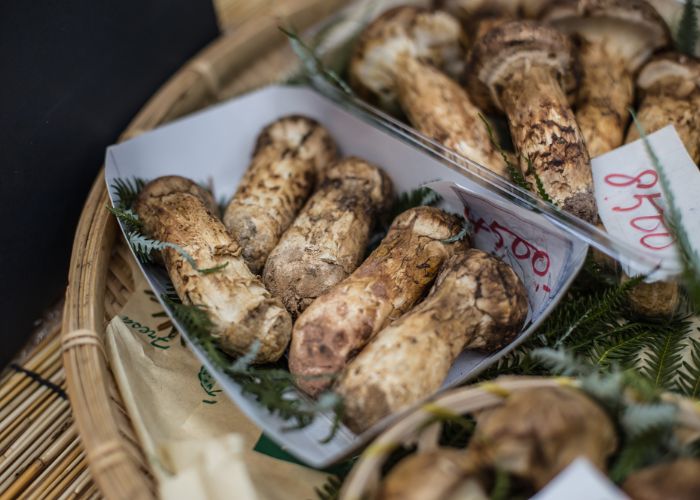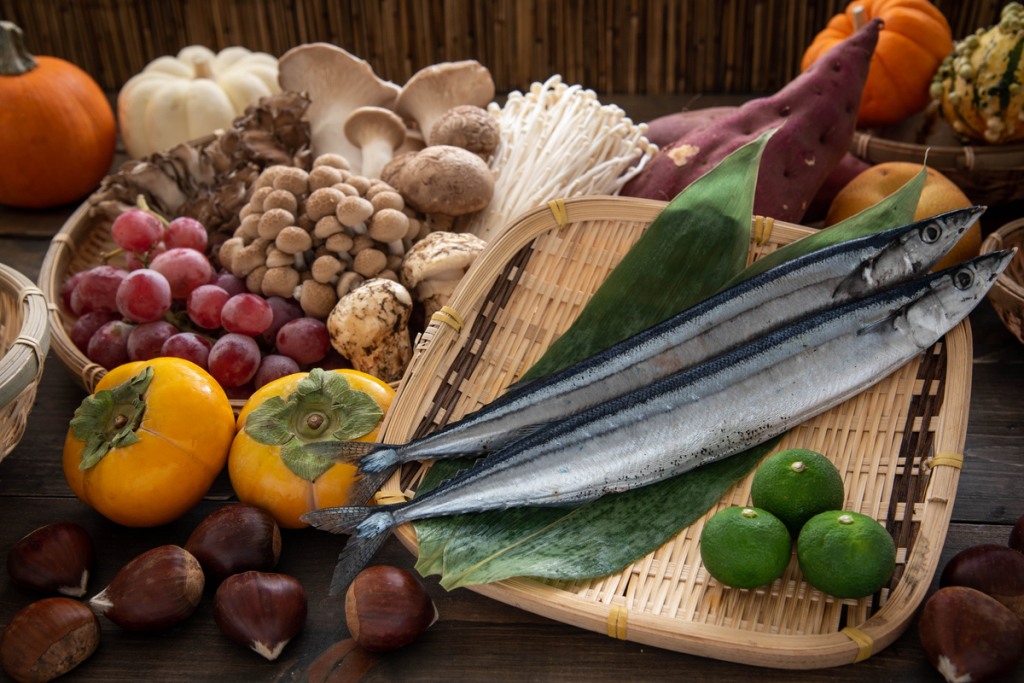As summer fades and the air grows cooler, Japan enters one of its most beloved culinary seasons: autumn. Known as shokuyoku no aki (食欲の秋), or “the season of hearty appetites,” this time of year brings a bounty of seasonal ingredients and dishes that are best enjoyed fresh from the harvest. Japanese food culture places a strong emphasis on eating foods in season, and autumn is considered one of the richest times for flavors.
Here’s a detailed guide to the must-try autumn foods and dishes in Japan, how they’re prepared, and where to find them.
Chestnuts (栗・Kuri) – From Savory Rice to Elegant Desserts
- Kuri-gohan (栗ご飯): Steamed rice cooked with peeled chestnuts, often seasoned lightly with salt, soy sauce, or sake. Sometimes kombu (kelp) or a dash of mirin is added to deepen the flavor.
- Kuri-manju: A traditional Japanese sweet where chestnut paste is wrapped in a soft outer dough, then baked.
- Kuri-kinton: Mashed sweet potatoes mixed with chestnuts, slightly sweetened. This dish is also eaten during New Year, but in autumn, it’s made with freshly harvested chestnuts.
- Mont Blanc cakes: A French-inspired dessert that has become a Japanese autumn classic, with chestnut cream piped into delicate swirls over sponge cake or meringue.
📍 Where to try: Obuse in Nagano (famous for chestnut sweets) or Kyoto wagashi shops.
Persimmons (柿・Kaki) – Autumn’s Jewel Fruit
- Fresh kaki: Peeled and sliced, often served as a refreshing snack or dessert after meals.
- Hoshigaki (干し柿): Persimmons hung outside in strings to dry naturally in the autumn air until the sugars crystallize into a delicate white bloom.
- Kaki salad: Fresh persimmons used in autumn salads, often paired with daikon radish or mizuna greens.
📍 Where to try: Nara Prefecture for persimmon farms or local markets across Japan.

Sweet Potatoes (さつまいも・Satsumaimo) – Simple, Sweet, and Satisfying
- Yaki-imo (焼き芋): Whole sweet potatoes roasted over hot stones or coals until their natural sugars caramelize.
- Daigaku-imo (大学芋): Fried sweet potato chunks coated in sugar syrup and sprinkled with sesame seeds.
- Sweet potato pastries: From pies to cheesecakes, bakeries and convenience stores release limited-edition sweet potato treats in autumn.
📍 Where to try: Street-side yaki-imo trucks in cities, or Kagoshima Prefecture for premium varieties.
Matsutake Mushrooms (松茸) – The Forest’s Rarest Treasure
- Dobin mushi (土瓶蒸し): A delicate broth steamed in a clay teapot with matsutake, shrimp, and ginkgo nuts.
- Grilled matsutake (松茸焼き): Charcoal-grilled with a light brush of soy sauce.
- Matsutake gohan: Rice cooked with matsutake slices, soy sauce, and dashi stock for fragrance.
📍 Where to try: Kaiseki restaurants in Kyoto or matsutake fairs in Nagano.

Sanma (秋刀魚・Pacific Saury) – The Taste of Autumn Seas
- Sanma shioyaki (さんま塩焼き): Whole sanma grilled with salt and served with grated daikon.
- Sanma sushi or sashimi: Available in coastal areas where the fish is freshest.
- Simmered sanma: Cooked with soy sauce, mirin, and ginger for a sweet-salty flavor.
📍 Where to try: Izakaya in Tokyo or fresh catches in Hokkaido and Iwate.
Other Autumn Delicacies
- Pumpkin (かぼちゃ・Kabocha): Sweet Japanese pumpkin used in tempura, stews, and soups.
- Shinmai (新米): Freshly harvested rice that is sweeter and plumper than stored rice.
- Ginkgo nuts (銀杏・Ginnan): Roasted or grilled, with a slightly bitter flavor, often enjoyed with sake.
How to Best Experience Autumn Foods in Japan
To truly enjoy autumn flavors in Japan, start with a visit to a department store food hall, known as depachika. These basement-level food markets transform during the season, showcasing bentos, sweets, and seasonal delicacies made with chestnuts, sweet potatoes, and persimmons. For a more casual experience, izakaya are the perfect place to sample dishes like grilled sanma, pumpkin tempura, and roasted ginkgo nuts alongside seasonal sake.
Travelers should also seek out local festivals, especially in rural towns, where chestnut harvest celebrations or matsutake fairs bring communities together with food stalls and tasting events. Even convenience stores and cafés embrace the season, releasing limited-edition sweets, lattes, and snacks inspired by autumn ingredients. These small discoveries often provide just as much cultural insight as a traditional meal in a fine restaurant.
Final Tip for Travelers
Eating seasonal foods in Japan is more than just enjoying good flavors—it is a way of experiencing nature and tradition at the same time. Autumn cuisine warms the body on cooler days, celebrates fresh harvests, and reflects the Japanese appreciation for seasonal beauty. If you are visiting Japan between September and November, make sure to try these seasonal delights. One bite of roasted sweet potato or grilled sanma can be as memorable as a temple visit or a stroll under the autumn leaves.

